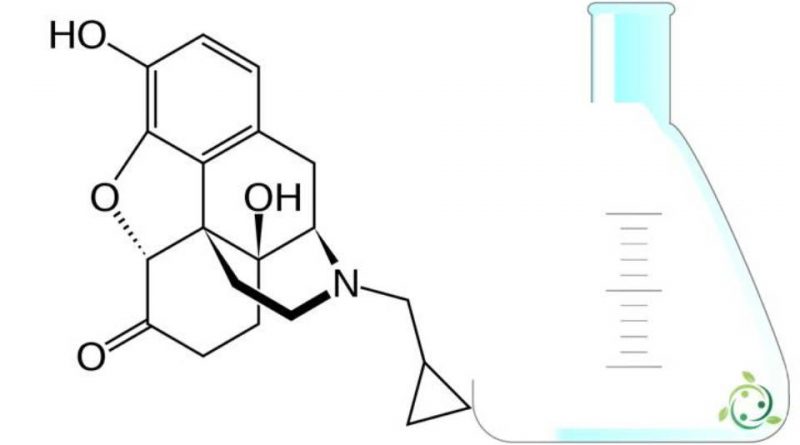Naltrexone
Naltrexone
Naltrexone, whose name according to the official IUPAC nomenclature is: N-cyclopropyl-methylnoroxymorphone; N-Cyclopropylmethyl-14-hydroxyhydro-morphinone; 17- (Cyclopropylmethyl) -4.5α-epoxy-3,14-dihydroxymorfinan-6-one is an alkaloid.
Naltrexone is a compound with a brute or molecular formula: C20H23NO4.
Naltrexone is an opiate receptor antagonist and is used in pharmacology for the treatment of opioid and alcohol addiction.
Naltrexone is very similar to naloxone and was first synthesized in 1963 by Metossian at Endo Laboratories, a small New York pharmaceutical company.
Naltrexone has a long duration of action (24 hours) and few side effects; it is called an antagonist because it acts selectively on the mu-receptors of opiates and prevents them from exerting their gratifying effects. Heroin, like other opiates, acts on the mu receptors of the brain and the idea of preventing its use by blocking its action has always been cultivated. Naltrexone binds to the aforementioned receptors with a strength 100 times greater than that of other opiates which can so hardly compete with the drug, at least for the time of its action. An individual who is adequately treated with naltrexone does not get any effect from a possible self-administration of opiates, and therefore the continued absence of the effects sought by drugs and the perceived uselessness of their effect gradually decreases desire and dependence.
Naltrexone is taken orally in tablet form.
When the therapy is followed at home, it is generally necessary to take one tablet a day, while in hospitals and clinics it can be administered once a day, every 2 days, every 3 days or every day except Sunday.
Side effects of naltrexone include:
– Anxiety;
– increase or reduction of energies;
– dizziness;
– constipation;
– diarrhea;
– stomach pain or cramps;
– muscle or joint pain;
– insomnia;
– irritability;
– headache;
– nausea;
– nervousness;
– loss of appetite;
– cry;
– rash;
– sleepiness;
– He retched.
It is also important to contact a doctor immediately if the intake of naltrexone is associated with:
– visual or sound hallucinations;
– confusion;
– vision problems;
– severe vomiting or diarrhea.
In addition, naltrexone should not be used by those who still use drugs or still drink excessive amounts of alcohol.
Before taking the drug it is also good to inform your doctor:
– of any allergies to naltrexone, naloxone, other opioid drugs or any other medicines;
– the possible intake (even in the previous 10 days) of narcotics, drugs, methadone, drugs against diarrhea or cough or painkillers;
– any other medicines, herbal medicines or supplements taken, remembering to mention in particular disulfiram and thioridazine;
– if you suffer (or have suffered) from depression or kidney problems;
– if you are pregnant or breastfeeding.
Finally, it is good to inform surgeons and dentists in case of an ongoing naltrexone treatment.
Warning: The information shown is not medical advice and may not be accurate. The contents are for illustrative purposes only and do not replace medical advice.

